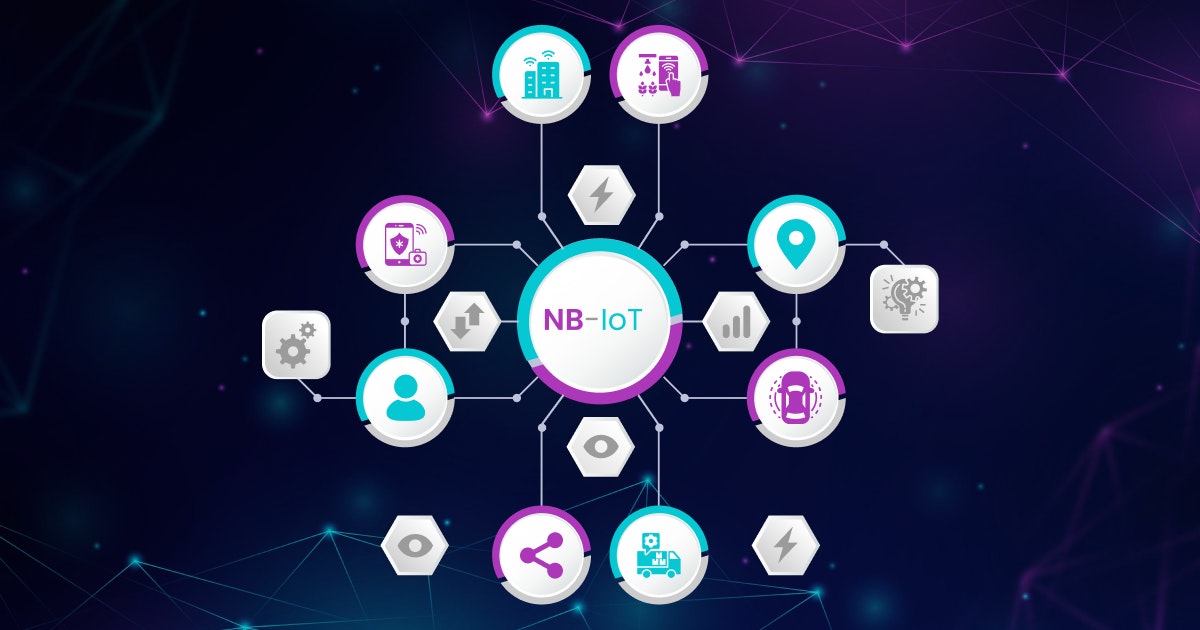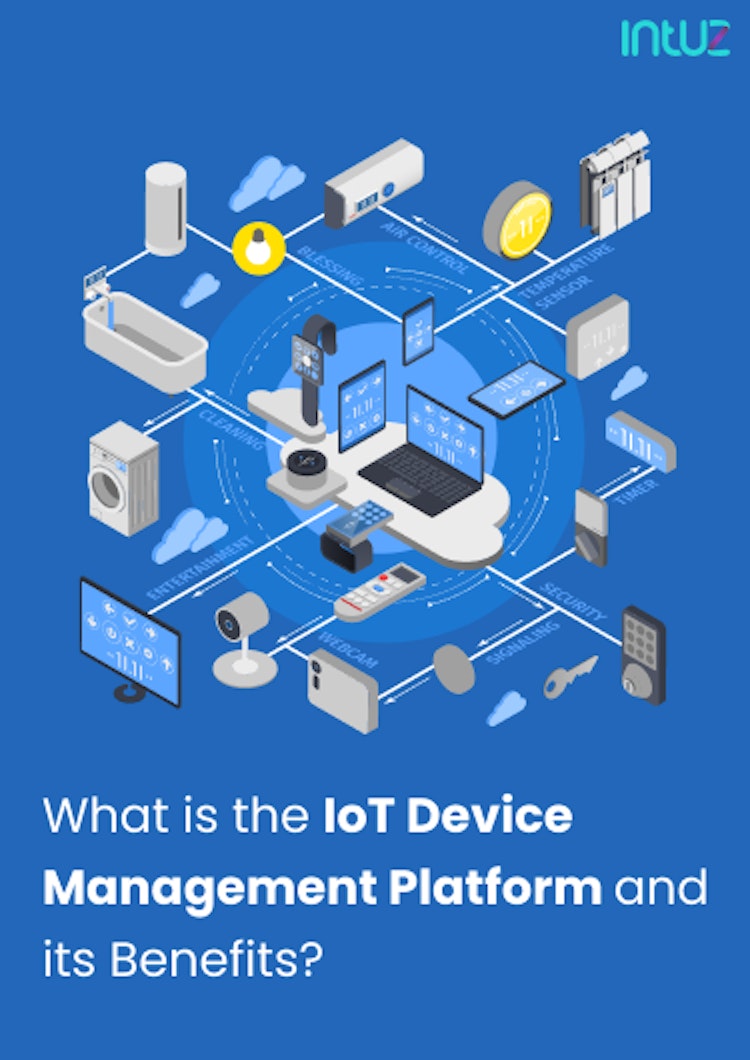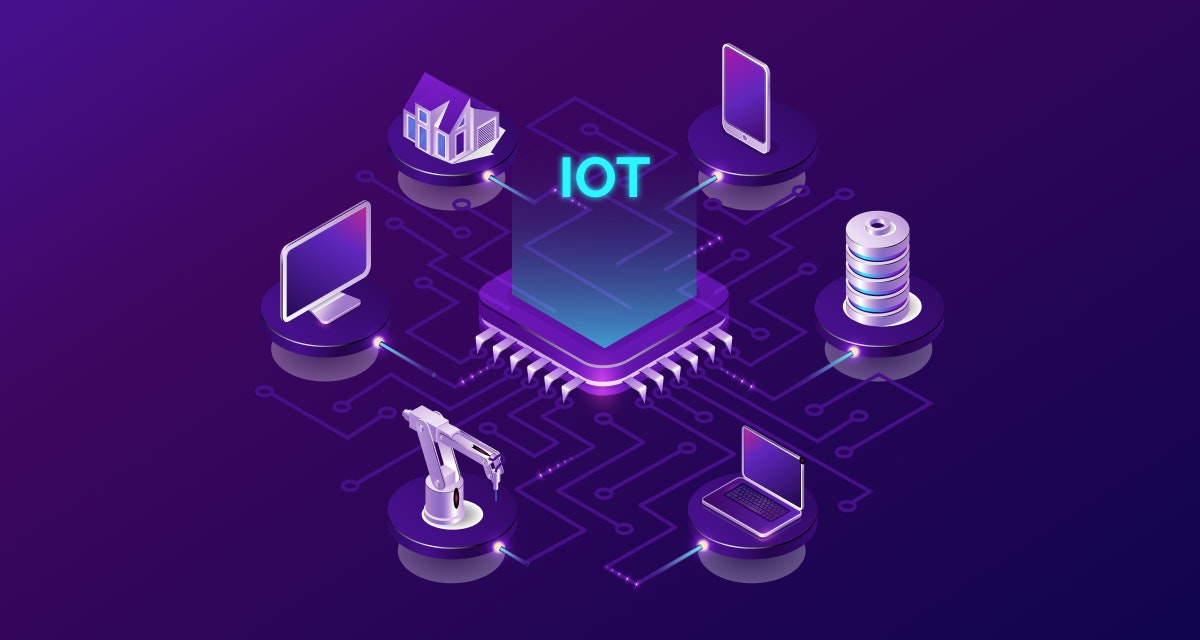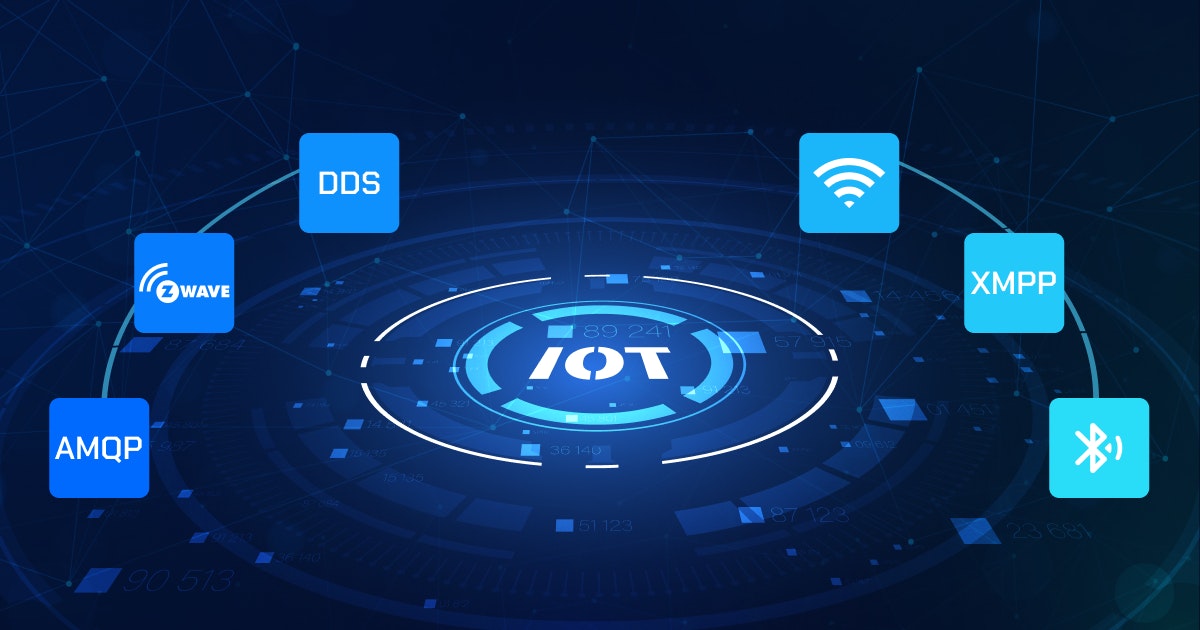Table of Content
Business and technology leaders across the globe are constantly exploring ways to leverage 5G's faster data speed, very low latency, ultra-high latency, and other advancements for digitally transforming their organizations.
For instance, 5G networks are helpful in factory automation, autonomous vehicles, and self-healing energy grids. However, businesses only focusing on 5G are missing out on Low-Power Wide-Area Network (LPWAN) that can launch transformative IoT applications.
Narrowband IoT (NB-IoT) is a highly scalable and low-cost LPWAN technology. Owing to the penetrability offered by mobile radio standards, NB-IoT is effectively used in various applications, including smart metering, precision agriculture, and building management.
The term "narrowband" has been borrowed from the telecommunications industry. It refers to data transmission over a particular range of frequencies. Narrowband IoT is a technology capable of transmitting data over long distances using less power. It connects devices on a vast network even if they are not connected to the internet.
What exactly is Narrowband IoT?
The next generation of IoT devices will be able to communicate with each other using a new mobile communications standard called narrowband IoT or NB-IoT.
It is an extension and improvement of the LTE standard for existing mobile communications infrastructure and previously unused frequency bands. Narrowband IoT has been widely adopted in Asia, Europe, and North America.
The low prices for the offering are due to its efficiency in the wireless carrier industry. Narrowband IoT is a new technology that will allow for the transmission of telemetry and control information at low data volumes.
In addition, it operates in narrow frequency bands designed to minimize energy consumption and can penetrate building structures with good results.
Narrowband IoT helps with application areas where you could not previously deploy IoT because of economic viability or technical limitations. It works well with applications with low data rates and even in networks of stationary devices. In other words, it is flexible, secure, and cost-effective - and therefore, a fantastic option in many industries.
Typical Narrowband IoT use cases
The prospects for deploying narrowband IoT are endless thanks to applications that range from smart metering and city planning to smart farming and manufacturing.

The technology has many advantages over traditional wireless solutions, such as higher penetration, security, and cost-effectiveness. NB-IoT has the potential to enhance the efficiency of companies by providing them with new services.
In turn, it will lead businesses towards more revenue-earning opportunities. Applications that do not require high data rates can be mapped conveniently - making it the ideal prerequisite for deploying applications with very high quantities. Here are the top use cases of NB-IoT:
1. Smart metering
The use of NB-IoT technology can be a great way to connect your network of electricity, water, or gas meters. This is because it does not require large amounts of data, and NB-IoT's strong coverage will work well with these types of devices typically located in basements of buildings.
Alongside the convenience of automated transmissions, the system provides consumers with transparent and detailed information about their current consumption.
It detects power drainers within the house and notifies consumers how they can save money on electric bills by making specific changes. Smart metering is a wonderful way for companies to improve their energy management, save costs and conserve resources simultaneously.
NB-IoT also provides the basis for integrating electricity from renewable energy sources such as solar and hydropower into the grid. Besides balancing out power fluctuations, it enables dynamic pricing based on real-time data about the type of power input into the grid.
2. Smart city
The future of cities is changing as more people move into urban areas. A recent UN study estimates that more than 60% of the world's population will live in cities by 2030. This is not surprising as we already have 35 megacities worldwide.
The strain on our global infrastructure from the ever-growing number of cities has never been more tremendous. Therefore, the need for innovative methods and ideas in urban planning is on the rise. Smart cities offer immense opportunities for urban planners, including drinking water supply or waste management.
For instance, a garbage can that reports itself when it is full saves the municipal waste disposal team a lot of time and money by avoiding unnecessary tours to empty the cans.
On the other hand, if a street lamp gets fused, it reports the damage automatically, making the repair and maintenance quick and easy. NB-IoT helps urban planners minimize their daily challenges while keeping up production levels across all sectors of society without fail.
3. Smart building
Imagine a world where buildings are not only intelligent but also interactive. The term "smart building" refers to the networking and automation of structures such as shopping malls, office complexes, or hospitals.
Such buildings are equipped with various sensors that provide information about temperature, pressure, humidity, and pollution levels, among other things.
With the help of smart buildings, blinds, heating, doors, and lifts can be controlled centrally - depending upon how many people are on-site at any given time.
NB-IoT helps optimize functionality while reducing operations costs so that more efficiency exists within the facility's environment.
Narrowband IoT uses mobile radio technology due to its excellent penetration rate - making it the perfect option for such scenarios. An IoT platform displays the digital twin of the building, thereby providing a transparent overview of all facilities and systems.
4. Asset tracking
The NB-IoT technology offers more reliable and secure communication than unlicensed options such as WiFi or Bluetooth because it operates in the licensed cellular spectrum.
It gives security to the network data as it cannot be interrupted by outside interference. It is suitable for manufacturing applications as these devices have a long battery life - perfect for prolonged use over time.
The NB-IoT technology is a powerful tool that can be used for tracking assets in cold storage warehouses, production lines, and shipments.
NB-IoT may not be the best solution for mobile assets as it only sends out a message at certain intervals. However, it is suitable for tracking static assets and is cost-effective.
5. Precision agriculture
Some farmers want to connect everything but cannot do so through wires. Moreover, WiFi does not stretch that far.
NB-IoT has proved its significance in the agriculture sector but with certain limitations. The technology transmits data about the moisture level in the soil and alerts the farmer when the field needs more water.
It allows sending only restricted data as the network works like a cellular connection, which does not have very high bandwidth. NB-IoT is a cost-effective option as it runs on power-saving technology and can run on any device with a battery life of around ten years.
6. IT administration
IT admins must take care of the security of NB-IoT devices. They have to ensure each device on the network is encrypted to control cybercrime. IT admins should deploy these devices in places that need extended battery support but are stationary.
7. Smart healthcare
NB-IoT has the power to revolutionize healthcare by allowing connectivity across medical devices alongside data collection from wearables and implanted sensors. The LPWAN technology is appropriate for connecting medical devices that need to transmit patient data intermittently.
The low-power requirements and long-distance data transmission capabilities of NB-IoT make it perfect for use in the healthcare industry. It helps improve patient care and remote patient monitoring throughout treatment.
The NB-IoT-powered out-of-bed system offers safety, especially to patients at the risk of falling, but without the risk of restricting their mobility. The bed is embedded with sensors that detect when the patient sits up in bed at night, activating the bed’s automatic light system.
And if the patient leaves the bed, the nursing staff can be notified of the same and they can reach the patient faster before there is a fall or any other accident.
LoRaWAN vs Narrowband Internet of Things – Explained
Learn More8. Supply chain management
The future of delivery is now at your fingertips with NB-IoT. The retail and logistics industry needs a solution that offers them low latency and high reliability, with power consumption being one of the critical considerations in this sector.
Wide coverage seems like an essential feature for logistics businesses that need constant access across large areas or many different stores. Narrowband IoT has the potential to be used in many different ways, such as tracking inventory and customer data management.
It can also assist with tasks such as monitoring temperature levels for perishable goods or optimizing store layouts to constantly receive maximum ROI from your investment.
The cost of installing a traditional Wide Area Network (WAN) can be prohibitively high or difficult to implement with existing infrastructure capabilities. However, using NB-IoT is cheap as it uses small cells with low-power consumption compared to other networking technologies.
9. Autonomous driving
In the automotive industry, NB-IoT is being used to connect cars and provide improved safety features. It can also help eliminate traffic accidents by enabling vehicles to communicate their location remotely.
All vehicles of the fleet may communicate among themselves as traffic patterns change. They can move according to where there are fewer or more vehicles on the roads at any given time.
BN-IoT technology may not be suitable for remote tracking, but it is helpful for fleet connectivity because of its low bandwidth requirements. Medium latency makes these systems appropriate for connecting self-driving cars with high-speed networking capabilities.
NB-IoT devices can perform well in low-power environments and allow connectivity of cars with specific "things" on the road, such as traffic lights and pedestrians.
10. Project management
With the help of NB-IoT, you can serve your clients end-to-end through effective project management. You can provide the necessary expertise - no matter where your IoT project is based. Rely on agile methodology and lean project implementation with central responsibility. Speed up processes and reduce friction loss with narrowband IoT.
Five practical benefits of Narrowband IoT
NB-IoT provides optimized, low energy consumption, and by functioning at lower frequencies, you can allow the technology to be used within building structures. Adding to that thought, here are the top five advantages of using the NB-IoT technology:

1. Low power consumption
The IoT technology has thrived in places with ample power and access to WLAN frequencies. But before we can expect the growth of our networked devices, they need to connect where signals are weaker.
NB-IoT delivers efficient low-power wireless performance. It is a new generation of IoT designed with the various challenges and complex applications of IoT in mind.
Many carriers claim that the new arrangement enables them to offer their customers long-lasting batteries. However, it requires careful integration of antennas for the device to be used to its full potential.
2. Penetrative signal
The NB-IoT connection is meant for devices hidden behind several layers of brick. The low bitrate frequency allows an additional link budget, surpassing cellular technologies and allowing connectivity in locations with signals otherwise inaccessible to humans.
Intelligent networking can help you stay connected through devices located in tunnels, underground regions, sewage networks, or rural areas.
3. Low latency
IoT devices are often deployed in challenging, high-density environments where they must be able to transmit data with an acceptable latency period and avoid dreaded packet loss.
Trial studies have shown that sub-10 latency can be achieved in underground applications for IoT, which is essential for the performance of live monitoring systems through NB-IoT.
It reduces packet loss and provides more value from devices with reduced lag time or delay when streaming data backs up top layers.
4. Greater security 'by design'
NB-IoT is the next generation of mobile communications with support from vital worldwide carriers. It offers all security measures currently present in LTE networks.
NB-IoT provides increased security and privacy by providing users with secure authentication, signaling protection, and data encryption enabled while allowing them greater control over their connection. However, there are some considerations one must make during the design cycle, such as products needing certification and an embedded SIM for additional security.
5. Future scalability
IoT could provide coverage for hundreds of millions of devices. The price of these devices is low, which means this new wireless technology will be able to accommodate the density anticipated in future networks.
The narrowband is also making considerations for LTE-M and more talkative devices. Eventually, it aims to provide long-range network connectivity for all mobile computing platforms.
Disadvantages of Narrowband IoT
Every coin has two sides. Even though narrowband IoT has many incredible benefits to offer to businesses and technology leaders, it is still a new technology and not free from restrictions. Here are the top three cons of NB-IoT:
1. The technology has a low bandwidth and slow data rate system. Hence, it is best suited for only stationary devices. It offers about 250Kbps download and 20k upload capabilities compared to LTE CAT-M1, which has an ideal bandwidth of 200kHz.
2. NB-IoT does not support VoLTE or Voice Over LTE, which is essential for speech transmission. Hence, the technology currently does not support voice transmission.
3. The lack of support for network roaming is one downside to considering NB-IoT when choosing between 4G technologies such as LTE-M and Sigfox.
Over to you
NB-IoT is a new technology that allows devices to connect without relying on cellular networks. It can be used to connect IoT devices, which are often located in remote or hard-to-reach locations, even if there is no existing connectivity infrastructure. It is a variant of LTE that operates in the unlicensed spectrum bands below 1 GHz but is highly efficient.
The NB-IoT network is capable of connecting more devices than traditional cellular networks. This makes it ideal for connecting large numbers such as smart meters, asset trackers, and agricultural sensors that can all benefit from an increased number in connection.
As NB-IoT technology continues to develop and mature, we expect a growing number of devices supporting this new technology standard in the coming years. If you are keen to build an NB-IoT application for your business, why not discuss it with the experts at Intuz?
We have worked on many IoT projects across verticals and have the knowledge and expertise required to launch error-free, future-ready, and client-facing products. Please fill in the quick contact form to book a consultation.





